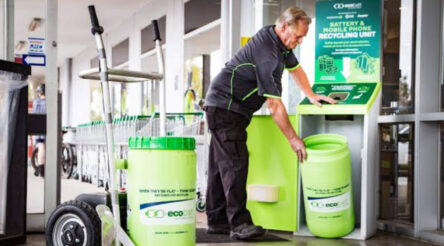A new deal plan for manufacturing – Manufacturing will languish without action to train a skilled Australian workforce

@AuManufacturing’s campaign to crowd source a new deal plan for manufacturing turns to the importance of VET skills. Gary Workman looks at the role of apprenticeships in the industry’s future prosperity.
As COVID-19 sweeps across the world, unexpected market realities have revealed the ingenuity of nimble manufacturers while exposing our economy’s vulnerability to global supply chain disruption. With specific medical technologies like ventilators in high demand Minister for Industry, Science and Technology Karen Andrews has implored local businesses to get creative in utilising their capabilities for what feels like a war effort. The Minister has heralded advanced manufacturing as one of Australia’s key growth industries. The market for COVID-related products will deflate, but the strategic importance of a strong onshore manufacturing capability will not be forgotten.
To rise to the challenge, the manufacturing sector will have to reassess how it recruits talent and develops skilled workers. Over the last five years the number of people enrolling in manufacturing-related vocational education and training (VET) courses fell by 13%, according to the National Centre for Vocational Education Research. Unacknowledged by Government, the rate of completion for manufacturing and manufacturing-related VET courses is dropping across the board. In electrotechnology alone, a vital qualification to support the growth of advanced manufacturers, the number of cancellations increased by 35% since 2015. Last year that represented over 8200 students dropping out of their training. Without a concerted effort to investigate the cause and correct the direction of these figures, Australia will find itself unable to support the growth of manufacturing across the economy.
There are already recognised shortages in trades like metal machinists, metal fabricators and electricians, where employers report being unable to find suitable candidates for their businesses. With a lead time of four years to complete apprenticeship training, it is necessary that manufacturing industry needs are clearly understood across the medium to long term, allowing a manufacturing apprenticeship and training strategy to plug gaps and align with business development. Continuing to neglect VET education will result in further shortages and prevent the unexpected opportunity many more manufacturers have been given to make their mark as a successful Australian business.
Local skills shortages and a dramatic reduction in the number of apprentices completing their qualifications in manufacturing have remained unaddressed in recent years due to the sizeable skilled migrant workforce that has been historically readily available. There has been little need to consider the impact of a local workforce that is ill-equipped for roles throughout industry. Over 108,000 skilled migrant visas were due to be allocated in 2019/20, with a wide variety of manufacturing-related skills included on the list of desirable qualifications. International travel is likely to remain restricted for some time to come, limiting Australia’s access to overseas talent. Migration accounted for 62.5% of Australia’s population growth over the year to March. It is imperative that Australian manufacturers take the opportunity to overcome the clear risks associated with a heavy reliance on global resources and equip a local workforce as soon as possible. Working closely with Government to develop relevant qualifications and seeking the administrative expertise of group training organisations (GTOs) are vital steps to overcoming the dearth of ready-skilled international employees.
Highlighting the overall reticence of businesses to seek out apprentices is the rather sad statistic that just 32% of employers seek apprentices by approaching a TAFE or a school. Manufacturers should be encouraged to reach out to apprentices as a way to invest in their own talent pool. It is a fantastic way skill up new employees, supported by the educational rigour of recognised training institutions. Group training organisations also have historically provided a useful link between Australian businesses and apprentices, allowing skill rotations to develop well-equipped graduates.
There are good signs from the Federal Government that VET will play a role in the manufacturing growth strategy with the appointment of Andrew Liveris to a recently announced manufacturing task force. Mr Liveris was part of the US Government’s Task Force on Apprenticeship Expansion which drew on the Swiss education system to explain how vocational educators and industry working hand-in-glove can equip a highly relevant workforce. In Switzerland the youth unemployment rate is around 8%, where Australia’s youth unemployment currently sits at over 13% and represents more than 300,000 young Australians looking for work and not finding it. Matched courses linking TAFE SA apprentices and industry are already on offer as part of South Australia’s largescale submarine building project.
Securing Australia’s manufacturing future will require a concerted effort to maximise the best resource we have, our underutilised workforce. Skilling up Australians to match the future needs of our industries is a necessary and urgent priority that Government and the manufacturing sector must work together to achieve.
Gary Workman is the Executive Director of the Global Apprenticeship Network (GAN) Australia.
@AuManufacturing’s new deal plan for manufacturing is brought to you with the support of Bosch Australia Manufacturing Solutions

Picture: Gary Workman
@aumanufacturing Sections
Analysis and Commentary Awards Defence Manufacturing News Podcast Technology Videos










